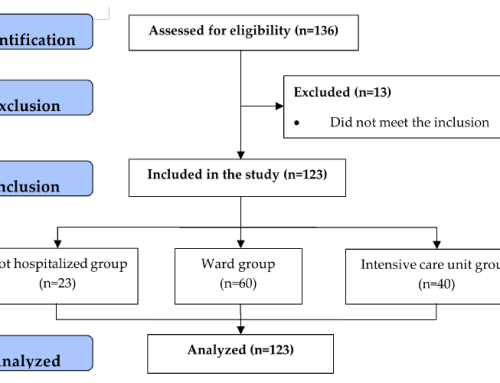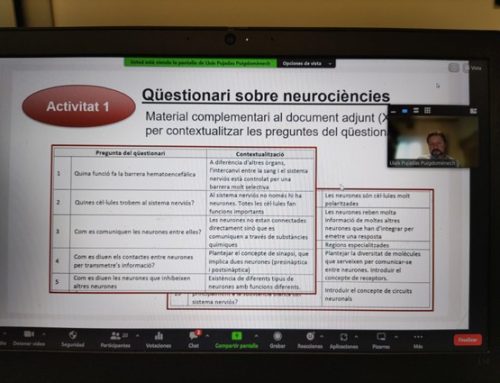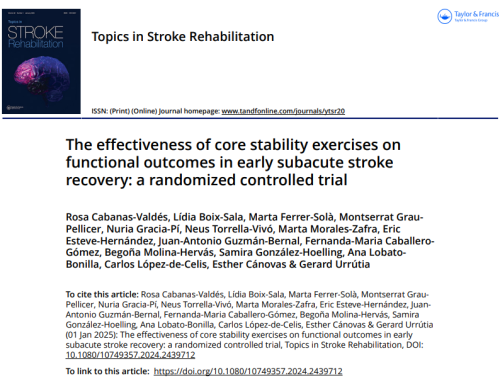ARTICLE. Espaulella Ferrer, M., Espaulella Panicot, J., Torné Coromina, A., Puiroriol Juvanteny, E., Casals Zurita, M., Roger Casals, N. and Escarrabill Sanglas, J., 2016. How to evaluate value in health interventions?. International Journal of Integrated Care, 16(6), p.A256. DOI: http://doi.org/10.5334/ijic.2804
Abstract
Introduction: In order to create value in health interventions, we should be able to assess the outcomes.
M. Porter, in his article “What’s value in health care”, proposes a new model for the assessment of health outcomes through the concept of value which refers to the output achieved relative to the cost incurred (VALUE = HEALTH RESULTS / COST). He proposes to assess health outcomes in three dimensions:
1. Health status achieved or maintained
2. Recovery Process
3. Sustainability of health
Having a tool to assess daily clinical practice will allow us to identify the strengths and weaknesses of our interventions and generate further changes to improve them.
Objective: To implement the evaluation results by the M. Porter method we selected a group of patients admitted to a geriatric medical-surgical unit.
Patients were evaluated at three different times during the process (the moment of discharge, 1 month and 3 months later).
Results: We have a sample of 100 patients, 25% were admitted for hip fracture and 75% for medical condition. The average age was 86.3 ± 4.1. The Barthel index (IB) before the admission was 81.15 ± 19.8 points. 2/3 of the patients admitted showed no cognitive impairment and 96% showed at least one geriatric syndrome prior to the admission. Except for 4 patients, all the remaining patients performed at least in one advanced activity of daily living. The average stay was 7.53 ± 3.8 days, during which a functional decline of 34.1 ± 25.52 points was detected (IB previous admission – IB discharge). The mortality rate during the 3-month follow-up was 19%.
During the follow-up period we observed that the maximum functional recovery occurred in the first month (IB 1 month after discharge was 65.66 ± 27.4 points). Only 58.7% of patients return to their basal IB one month after discharge.
At the baseline 69.7% of patients were able to walk outside their home, whereas only 41.9% can do it after 3 months of follow-up.
Concerning hospitalization, in 82.5% of patients some adverse effects were observed, confusional syndrome being the most common (36.2%).
Intermediate care resources were used by 71% of the patients surveyed due to the functional decline at discharge.
Referring to clinical stability, 34% of patients have a further crisis event that requires contact with the health system. This new contact takes place after 32.23 ± 38.9 days on average. 26 patients presented two or more crisis events during the follow-up period.
Primary care was the only resource used in the follow up of 18% of the patients.
In the 3-month follow-up survey we asked a group of questions about the experience of the patient and/or their family during the attention received by the health care system during the whole process: 73.2% of them reported having been attended in the appropriate time-frame, 90% reported positively about the cause of consultation being solved and being informed about their health problems and tests results. The average of affirmative answers to the question of whether they had been involved in making decisions during the illness process was 61.1%.
Conclusions: These results allow us to affirm that hospitalization for an acute problem marks a turning point in the health of patients. The most relevant result is cognitive and functional decline that occurs in over 50% of cases. In addition the functional loss has a big impact on mortality and use of resources because this population has a low clinical stability.
This group of indicators evaluates results of health systems, not just the acute care hospital ones, therefore allows us to get a picture of the overall performance of the health system.
This leads us to think that the best response of the health system for the care of aged, frailty and multimorbidity patients is clinical integration.
In order to improve our interventions and give them a greater value, we need to act at different levels: Detection of frail patients at risk prior to a crisis event, use of early identification systems to allow home hospitalization, enhance the activity of rapid action teams that act on special groups prone to present frequent crisis events such as institutionalized patients and improve the work carried out by hospital at home teams.












Leave a Reply